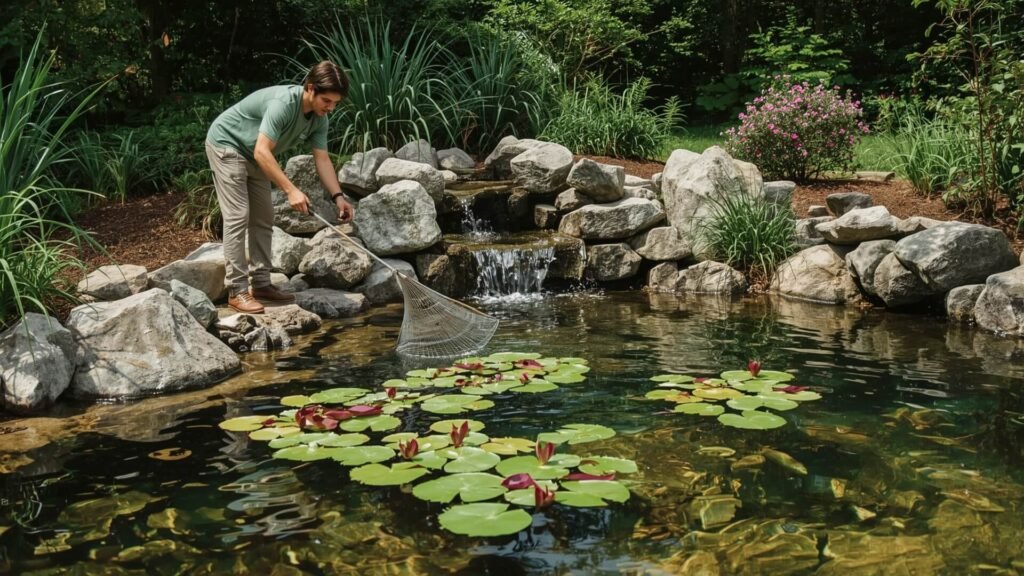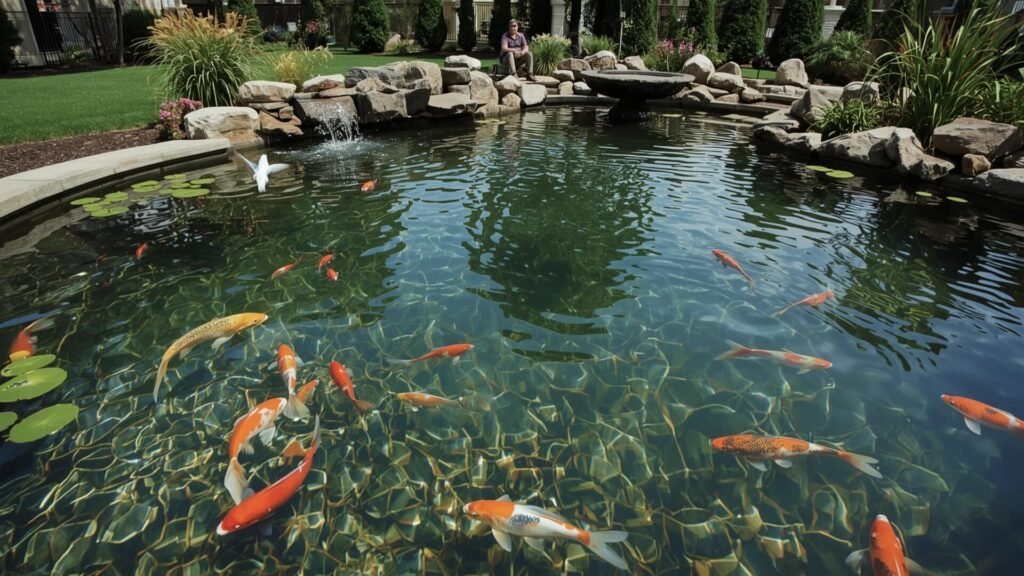
Adding a fishpond to any garden or backyard is a simple way to bring the calming sounds and sights of nature closer to home. Fishponds attract birds, frogs, and other wildlife, creating a peaceful place to relax after a busy day. A fishpond provides not just beauty, but also a new ecosystem that supports plants, fish, and insects, making even small spaces feel alive and inviting.Those living in urban areas may find that a pond offers rare and meaningful contact with nature when green spaces are limited. By giving fish and other small creatures a place to thrive, the pond helps protect local wildlife and helps people reconnect with the natural world.
Key Takeaways
- A fishpond adds beauty and supports wildlife in any yard.
- It can offer a peaceful place to relax and observe nature.
- Careful planning is important for long-lasting enjoyment.
Key Benefits Of having A Fishpond
A fishpond can transform a yard by adding beauty, a peaceful atmosphere, and new interactions with nature. It can also offer a home for local wildlife and help people feel more relaxed in their own outdoor spaces.
Enhancing Property Aesthetics
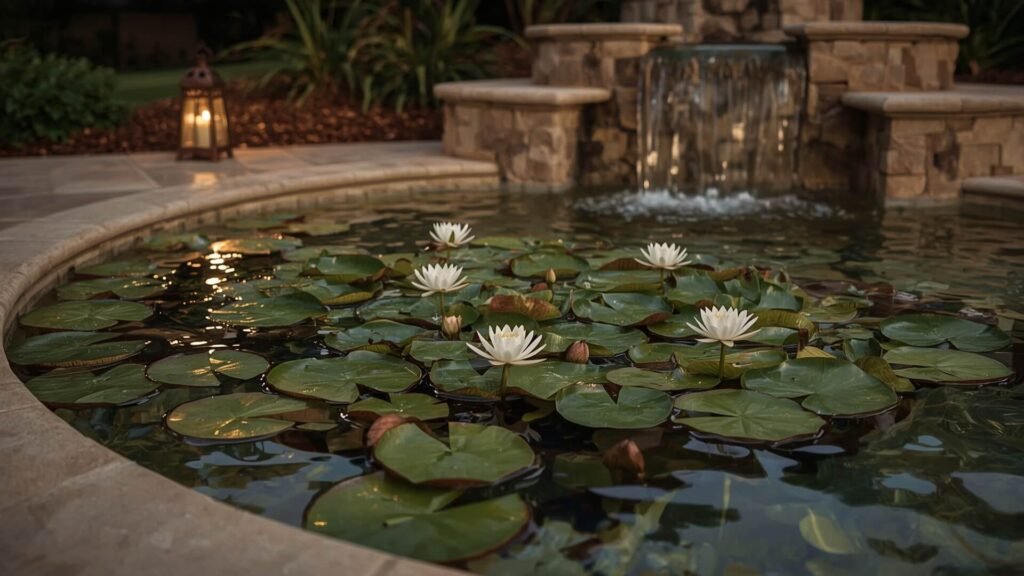
A well-designed fishpond adds a unique feature to any landscape. The pond can become a focal point, drawing attention with its clear water, colorful fish, and aquatic plants. Small waterfalls or fountains can bring gentle movement and soothing sounds, making the entire area more attractive.
Features such as rocks, lily pads, and carefully placed lighting can further highlight the pond, especially at night. Property owners often find that these details increase their pride in their outdoor space. In some cases, adding a fishpond may even raise curb appeal and home value, as noted in articles on landscape design benefits.
List of popular fishpond features:
- Koi or goldfish
- Water lilies and lotuses
- Stone borders
- Small waterfalls or streams
- Subtle underwater or edge lighting
Promoting Mental Wellbeing
Having a fishpond offers a simple way to reduce daily stress. The sound of flowing water and the movement of fish can help people unwind after a busy day. Watching fish swim has been found to encourage calmness and focus, making it easier to let go of worries and distractions.
Studies and homeowner reports show how relaxing by a fishpond can lower anxiety levels and improve mood. Many people enjoy sitting near the water in the morning or after work, using the space to read, think, or just enjoy the view. Easy access to this peaceful area can improve mental health for the whole family, as shown by many reports.
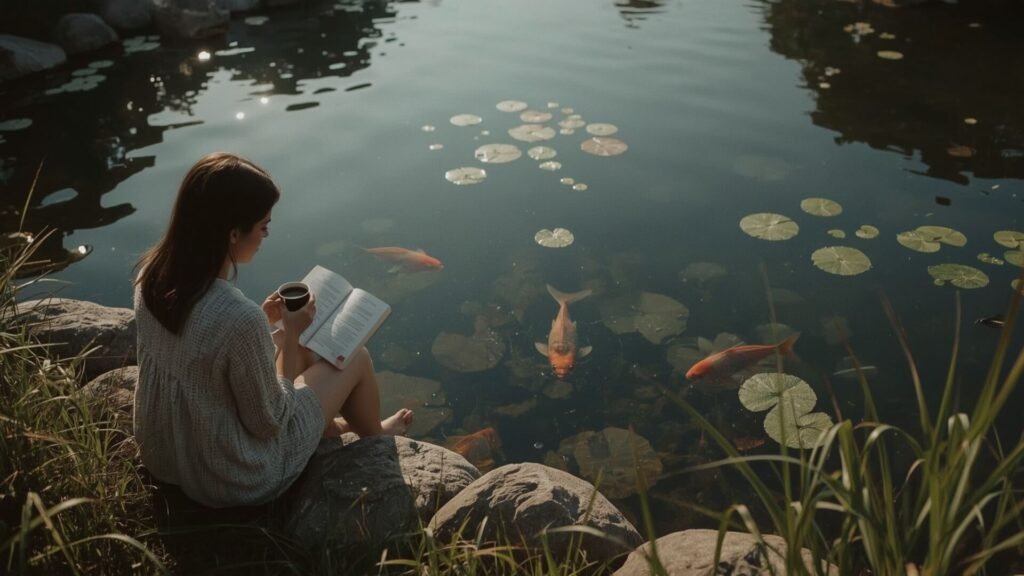
Simple ways to enjoy a fishpond daily:
| Activity | Benefit |
|---|---|
| Morning coffee | Calms the mind |
| Reading by the pond | Reduces stress |
| Feed the fish | Encourages Focus |
| Sit quietly | Lowers anxiety |
Supporting Local Wildlife
Fishponds play a key role in supporting urban or suburban ecosystems. The water attracts birds, frogs, and beneficial insects like dragonflies. This helps increase local biodiversity and can make a garden more lively and interesting throughout the year.
Fishponds also offer clean water for animals that may not find it elsewhere, especially in developed areas. Beyond fish, many pond owners spot turtles, butterflies, and native plants that thrive near the water’s edge. People in cities or towns may find that a fishpond brings some of their first real interactions with local nature, while teaching children about the environment in a hands-on way.
Types of wildlife commonly attracted:
- Songbirds
- Frogs and toads
- Dragonflies
- Bees and butterflies
- Small mammals
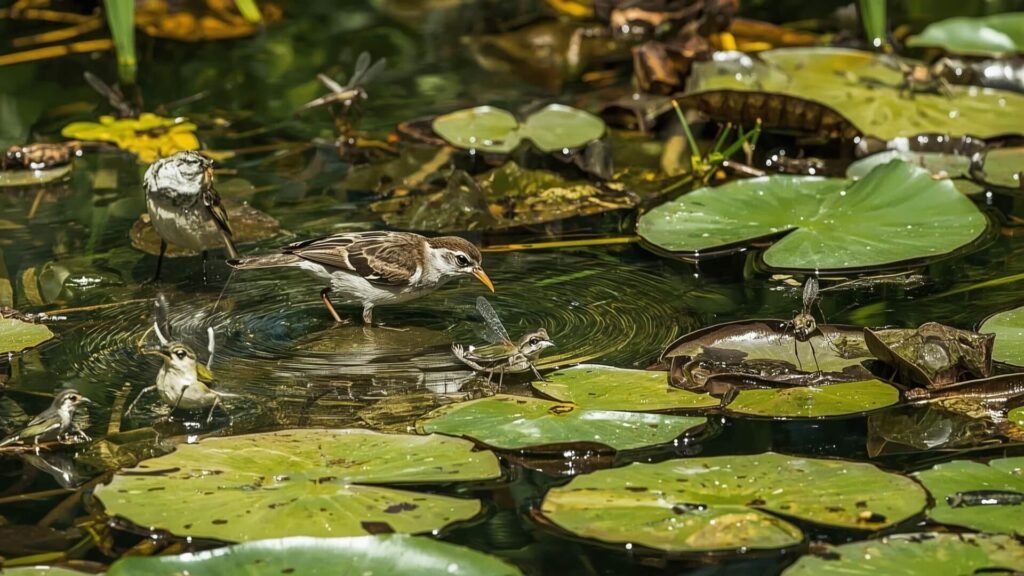
Practical Uses Of A Fishpond
Fishponds offer direct benefits for sustainability and water management. They can help people produce their own food and manage rainwater to protect the environment and property.
Sustainable Food Source

A fishpond allows families to raise fish for food right in their backyard. Common species like catfish, tilapia, or koi can be bred and harvested as needed. This reduces the need to buy fish from stores and can provide fresh protein throughout the year.
A small home pond can support a steady supply of fish with proper care. Owners can manage what the fish eat, which may lead to healthier meals. For those wanting to take it further, ponds can even support small plants like watercress, adding more variety to a home-grown diet. Sustainable fish farming also limits the impact on wild fish populations, lessening pressure on natural resources.
A fishpond can also become a tool for backyard learning. It teaches children and adults about biology, lifecycles, and food systems, making daily life more connected to the environment. Fishpond management keeps the ecosystem in balance, which is important for long-term use. A healthy pond brings a reliable, sustainable food source while supporting diverse backyard life. Learn more about these practical and sustainable benefits.
Rainwater Collection And Management
Fishponds can collect and store rainwater, helping with water conservation and stormwater management. When it rains, rooftops and driveways send water into the pond instead of letting it rush into drains or cause runoff. This process lowers the risk of flooding and erosion in gardens and yards.

By capturing rainwater, a well-designed fishpond holds extra water for dry spells. This stored water benefits both fish and plants, keeping the pond healthy during hot weeks. It can also reduce the water needed from local supplies, which is helpful in drought-prone areas.
Fishponds work as natural filtration systems. As water moves through rocks and plants within the pond, many impurities are filtered out. This keeps the water clear and helps protect the wider environment. By managing rainwater responsibly, homeowners can make their property more sustainable and resilient. Details on rainwater management can be found in this guide to fish ponds.
Essential Considerations Before Building A Fishpond
Building a fishpond at home requires careful planning to ensure healthy fish and a long-lasting setup. Homeowners need to address space needs, maintain water quality, and be aware of regulations and environmental impacts.
Space And Design Requirements
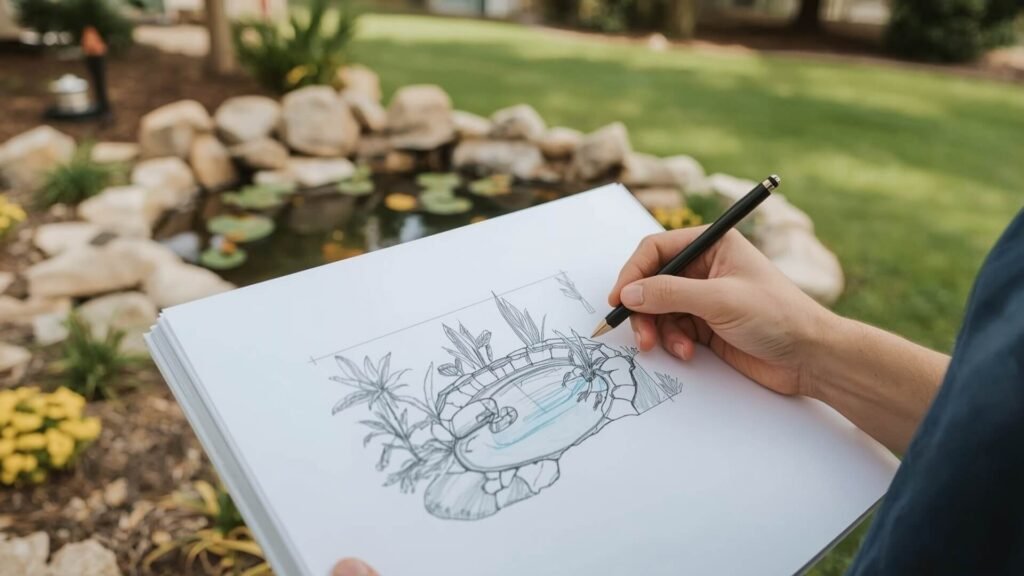
Choosing the right spot for a fishpond is important. The area must be level, stable, and able to support the pond’s weight when full of water. Good sunlight is needed, but too much direct sun can overheat the water and stress the fish.
A pond should be deep enough to protect fish from predators and temperature changes. At least two feet is common, but some experts recommend depths of over four feet for certain wildlife. The shape and size should make cleaning and maintenance easy.
It is smart to start with a smaller pond to learn the basics before scaling up. Materials like preformed liners, tubs, or rubber pond liners work well. Avoid placing the pond under trees because falling leaves can make extra cleaning work.
Water Quality Control
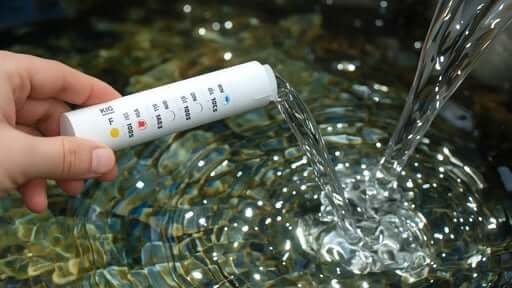
Keeping the water clean is one of the most important factors for healthy fish. A good filter system is needed to remove waste and stop water from becoming cloudy or unsafe. Using a pump keeps the water circulating, which helps add oxygen and prevents algae growth.
It is also important to check the water’s pH, temperature, and ammonia levels regularly. Fish need stable water conditions to avoid stress and sickness. Testing kits are simple and help catch problems early.
Avoid using tap water that is high in chlorine or other chemicals. Adding water treatments or letting the water sit for a day before adding fish can protect their health. Regular water changes are helpful to keep the pond balanced and clean.
Legal And Environmental Factors

Before construction, property owners must make sure building a pond meets local rules. Some cities or states require permits or have regulations about fishponds. Checking these guidelines helps avoid legal trouble or having to remove the pond later.
Environmental factors like the soil type are also important. If the soil is very sandy, water may leak out, so a strong liner or extra sealing is needed. Climate will affect how deep and large the pond needs to be to protect fish during heat waves or freezing weather.
Some regions have restrictions to protect native species or prevent flooding. Considering these impacts can help build a safe and legal pond that won’t harm local wildlife. Always plan ahead and seek advice from local offices if unsure about the rules.
Long-Term Value And Maintenance
Fishponds can add lasting worth to a property if they are well designed and properly maintained. Caring for a pond also brings several steps that help keep water clean and fish healthy.
Increasing Property Value
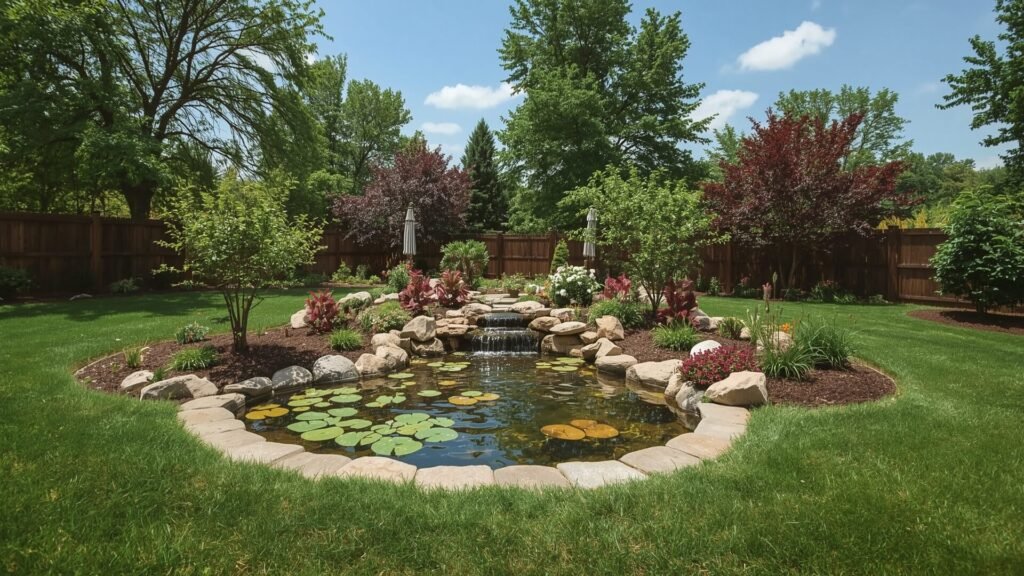
A fishpond can boost a home’s resale value by adding visual interest and creating a peaceful outdoor feature. Buyers often view a well-kept pond as a sign of thoughtful landscaping and extra care for the property. Location and visibility matter; ponds placed in open, central spaces—easy to see from the home or yard—are usually more appealing to future buyers.
Ponds can make outdoor living spaces more attractive, encouraging family use and social time. Some property owners find that a pond can even set their home apart in the market, giving it a unique selling point. For more details on how ponds may affect housing value, check out this explanation of backyard pond property value.
Maintenance Best Practices
Regular maintenance is key to enjoying the benefits of a pond over the years. The most important tasks include reducing the amount of nutrients entering the pond, controlling soil erosion nearby, and keeping the shoreline stable. Using concrete for shorelines can make them stronger and slow wear and tear from water and weather.
It is important not to connect your pond to storm drains. This can bring in dirty runoff and harm water quality. Diverting local runoff and using berms or barriers can also help keep the pond clean. Simple actions like removing leaves or other debris from the water keep the system in good shape. For a step-by-step list of basic pond care, visit this pond management guide.
